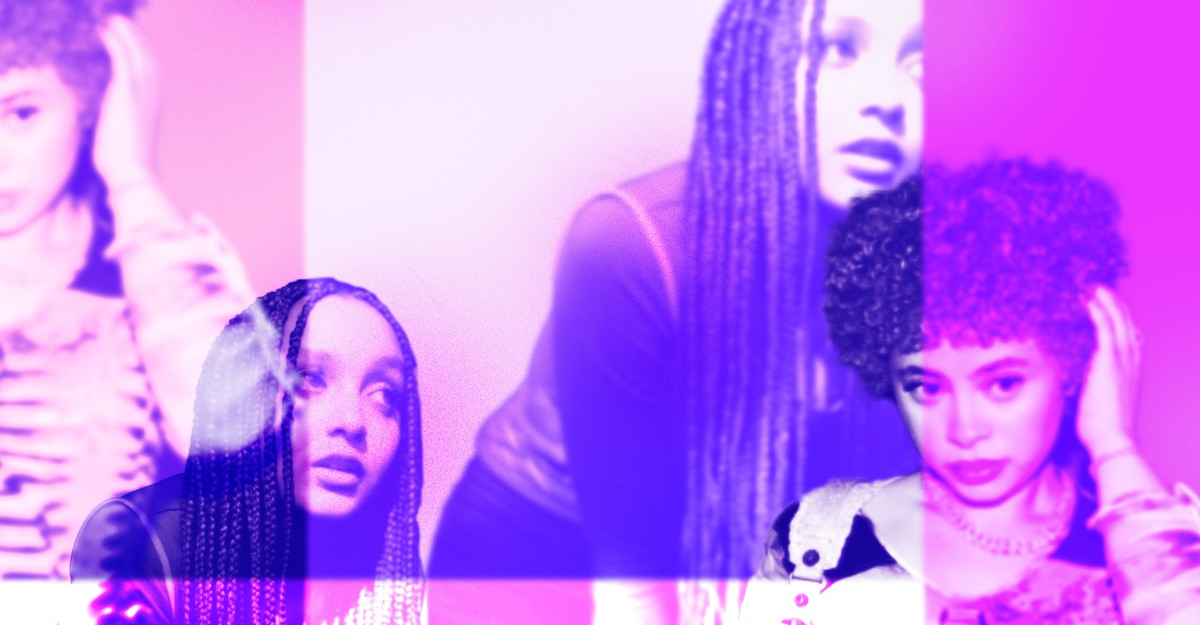
One of the most popular songs in the world right now presents a musical riddle: Are you supposed to dance or nap? PinkPantheress’s “Boy’s a Liar Pt. 2,” featuring the rapper Ice Spice, sounds both fast and sluggish, new and old. It’s undeniably catchy and yet feels as fleeting as a mild dream. Another vexing fact: Liar is pronounced, in the chorus, “lee-yah.”
Really, the No. 3 song on the Billboard Hot 100 is the culmination of a few trends, technologically driven and taste-bound. In many enclaves, music is getting faster and more fidgety. But that doesn’t necessarily mean it’s getting more energetic or extroverted. Welcome to the age of lo-fi beats to take stimulants to.
Understanding the new vibe requires understanding the old one. About a decade ago, pop music seemed to thicken and slow thanks to the influence of trap, dubstep, and chill-out playlists on streaming platforms. Lumbering basslines and military-march hi-hats gave many songs a sludgy heft, and electronic dance music mellowed into midtempo, café-friendly wallpaper. These developments shaped all sorts of scenes—R&B and country alike—for years.
Perky rebellions against 2010s torpor have arisen in the past few years, no doubt also reacting to the bleakness and isolation wrought by COVID-19. The disco revival embodied by Beyoncé’s Renaissance is one example. The ever-rising influence of dembow, a vigorous variant of reggaeton, is another. In many dance clubs, lightning-quick drum and bass has come back. The overdriven electronic sound known as hyperpop keeps percolating. “Boy’s a Liar Pt. 2” brings together some other pulse-quickening phenomena: club rap, drill, and TikTok’s encouragement of couch-bound hyperactivity.
PinkPantheress, a 21-year-old British musician, first drew acclaim in 2021 with a fresh musical formula. Her rhythms were sampled from vintage dance tracks that had, decades earlier, pummeled ravers using intricate, explosive percussion. But her production made those wild beats feel gauzy, gentle, and homespun. She sang of heartbreak in the guileless tone of a helpful AI. She strung together short, simple phrases to form elegant melodic sentences. No song was longer than three minutes, and most were under two. TikTok loved this, for obvious reasons. Amid the platform’s endless distractions, “sped up” remixes of songs do well because they’re efficient at being interesting. But PinkPantheress’s songs didn’t need any juicing. Each one miniaturized an emotional world, matching TikTok’s hummingbird heartbeat.
For “Boy’s a Liar” (both the original version of the song, which came out in November, and last month’s “Pt. 2”), PinkPantheress subsumed the rhythm of a dance-rap subgenre called “Jersey club.” The style has a brisk tempo and a pulsing beat that creates the illusion of constant acceleration. Steady yet frenzying, Jersey club is associated with complex footwork and choppy, hypnotic vocals (as well as the squeaky sound effect at the end of “Boy’s a Liar Pt. 2”). And though Jersey club originated more than 20 years ago in Newark, it is hot right now. Attention-grabbing songs by Drake, Lil Uzi Vert, and newcomers such as Bandmanrill are contributing to a wave of so-called club rap.
Simultaneously, a related boom is happening for the hip-hop style called “drill.” The signature drill beat has snares that sputter with the irregularity of a downed electrical wire, and synthesized bass that dives and swoops with dronelike smoothness. Each measure of the music feels minimalist, defined by a few basic elements, yet also action-packed, because those elements move in swarms. Although it’s now everywhere, drill was honed in London, Chicago, and New York City: cold, crowded places for a cold, crowded sound.
Fittingly, one of drill’s most prominent avatars of the moment goes by a frosty name, Ice Spice. A Bronx-raised 23-year-old, she uses her raspy voice with methodical focus, delivering each diss or boast as if moving through a checklist. With her conversational-yet-clear sound and her distinctive red curls, she quickly became a social-media celebrity after her song “Munch (Feelin’ U)” went viral last year. But “Boy’s a Liar Pt. 2” is both her and PinkPantheress’s first appearance in the upper echelons of the Hot 100.
The team-up of these two women is poignant, in a way. Lyrically, “Boy’s a Liar Pt. 2” is a bit emo, which makes sense because PinkPantheress is a huge Paramore fan. In the song, she worries aloud whether her love interest will find her “ugly,” a bluntly relatable fear in the Facetuning era. In a verse laying into some dirtbag, Ice Spice drops her invulnerable posture in one revealing couplet: “But I don’t sleep enough without you / And I can’t eat enough without you.” That the track is sparring with artists such as SZA for positioning near the top of the Hot 100 suggests that vulnerability—particularly from women, particularly from Black women—is as in demand as it’s ever been.
What’s most remarkable about the song, however, is simply its featherweight feeling. On paper, a club-rap song about anger and inadequacy might seem intense and jolting. But PinkPantheress (and the producer Mura Masa) wraps this firecracker in felt. The track features cute keyboard sounds reminiscent of an early-2000s DVD menu. The singing is plush and quiet. The song’s popularity recalls other DIY-sounding hits such as Steve Lacy’s “Bad Habit,” which (especially when sped up on TikTok) bury pining emotion under distortion and tumult for a dissociative effect. If life feels fast-moving these days, it’s not like the sleek zooming of a sports car. Rather, it’s more swirling and surreal: The clock ticks at the same rate as ever, but our minds race anew.








